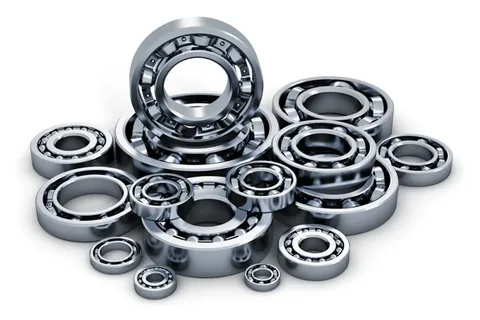Curious how ball bearings slash friction in machines by 90%? These compact components fuel industries like automotive and aerospace, managing heavy loads with precision. This blog explores ball bearing types and their uses based on load-carrying capacity. You will learn about different ball bearing types, their applications, and how to choose the right one. The post also covers benefits, maintenance tips, and insights into key industry players. Get ready to understand why ball bearings are used in machines and how they keep equipment running smoothly.
Decoding the Power of Load Capacity in Ball Bearings
Load capacity defines how much weight a bearing can handle. Ball bearings are used to reduce friction and support various loads. Understanding this helps select the right bearing for any machine.
Why Load Capacity Matters
- Efficiency: High load capacity ensures machines run without breakdowns.
- Durability: Bearings with proper capacity last longer under stress.
- Safety: Correct load handling prevents equipment failure in critical applications.
Types of Loads in Bearings
- Radial Loads: Forces perpendicular to the shaft, common in wheels.
- Axial Loads: Forces parallel to the shaft, seen in thrust applications.
- Combined Loads: Mix of radial and axial, typical in complex machinery.
Factors Affecting Load Capacity
- Material: Steel or ceramic affects strength and wear resistance.
- Design: Number and size of balls impact load distribution.
- Lubrication: Proper grease or oil reduces friction and boosts capacity.
Ball Bearing Types: Tailored Strength for Every Load and Use
Different ball bearing types suit specific load needs. Each type offers unique benefits for machines. Knowing these helps match bearings to applications.
Deep Groove Ball Bearings
- Use: Deep groove ball bearings are used for high-speed, radial loads.
- Benefit: Versatile, handling both radial and moderate axial loads.
- Example: Found in electric motors and automotive wheels.
Angular Contact Ball Bearings
- Use: Ideal for combined radial and axial loads.
- Benefit: High precision for applications like machine tools.
- Example: Used in pumps and compressors for stability.
Thrust Ball Bearings
- Use: Designed for axial loads in low-speed applications.
- Benefit: Supports heavy thrust loads with minimal friction.
- Example: Common in automotive steering systems.
Choosing Your Perfect Bearing: Matching Loads to Game-Changing Uses
Selecting the right bearing boosts performance. Ball bearings are used to reduce friction and handle specific loads. Follow these steps to make the best choice.
Assess Load Requirements
- Measure Load Type: Identify radial, axial, or combined loads.
- Check Load Size: Calculate weight to ensure bearing capacity matches.
- Consider Speed: High-speed machines need bearings with low friction.
Match Bearing to Application
- Industry Needs: Automotive or aerospace may require specialized bearings.
- Environment: Dusty or wet conditions demand sealed bearings.
- Maintenance: Choose low-maintenance bearings for long-term use.
Consult Industry Experts
- Suppliers: Work with trusted providers for quality bearings.
- Technical Support: Seek advice for complex applications.
- Testing: Test bearings in real conditions before full use.
Prominent Players in Ball Bearing Production
Multiple companies provide various ball bearing types to meet diverse requirements. Alkhalij Enterprises offers a wide range of bearings for industrial and automotive use. Zahrat Al Madina Auto Spare Parts LLC provides bearings for vehicles and machinery across the UAE. KG International distinguish themselves with a wide-ranging bearing portfolio, specializing in commercial vehicle solutions. Their global reach and focus on quality make them a top choice for heavy-duty applications. Their bearings ensure durability in trucks and buses, meeting strict industry standards.
Conclusion
Ball bearing types vary by load capacity, from deep groove to thrust bearings. Each type supports specific applications, reducing friction and boosting efficiency. Deep groove bearings handle radial loads, angular contact bearings manage combined loads, and thrust bearings excel in axial tasks. Choosing the right bearing involves assessing load, speed, and environment. Proper selection ensures machines run smoothly and last longer. KG International offers reliable solutions for commercial vehicles, with high-quality bearings tailored to heavy loads. Explore KG International to find the perfect bearing for your needs. Ball bearings are used in machines to keep industries moving forward.

